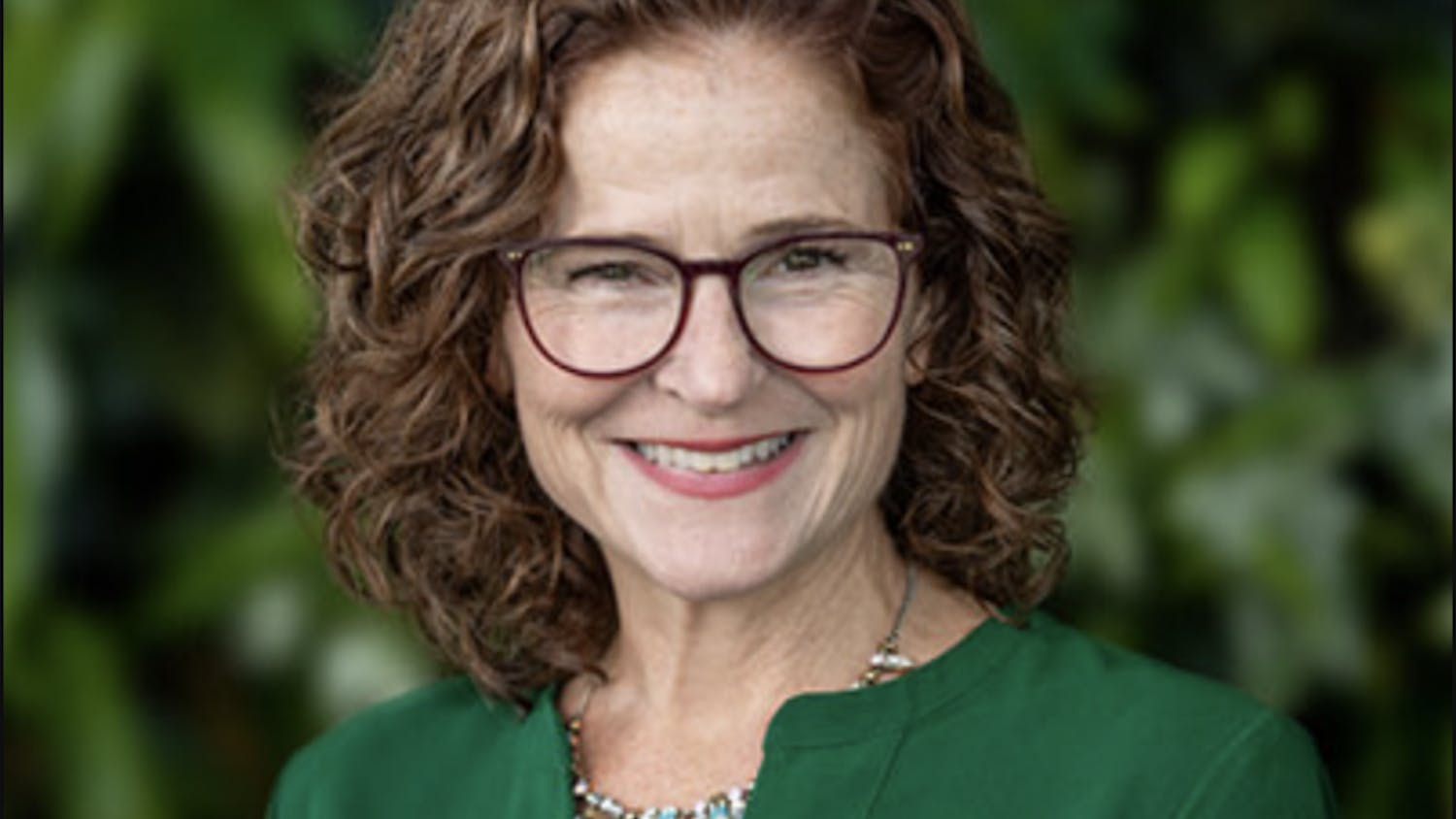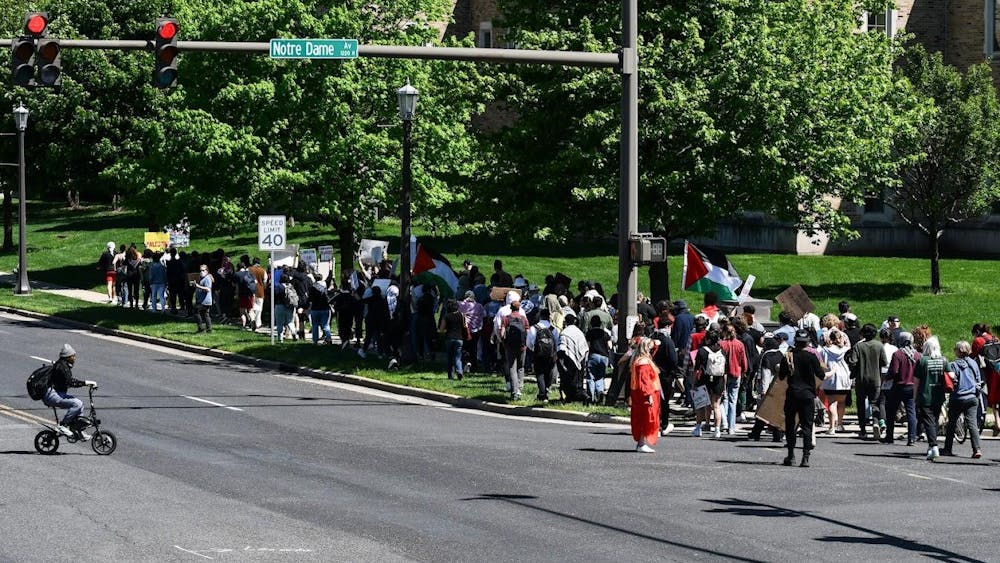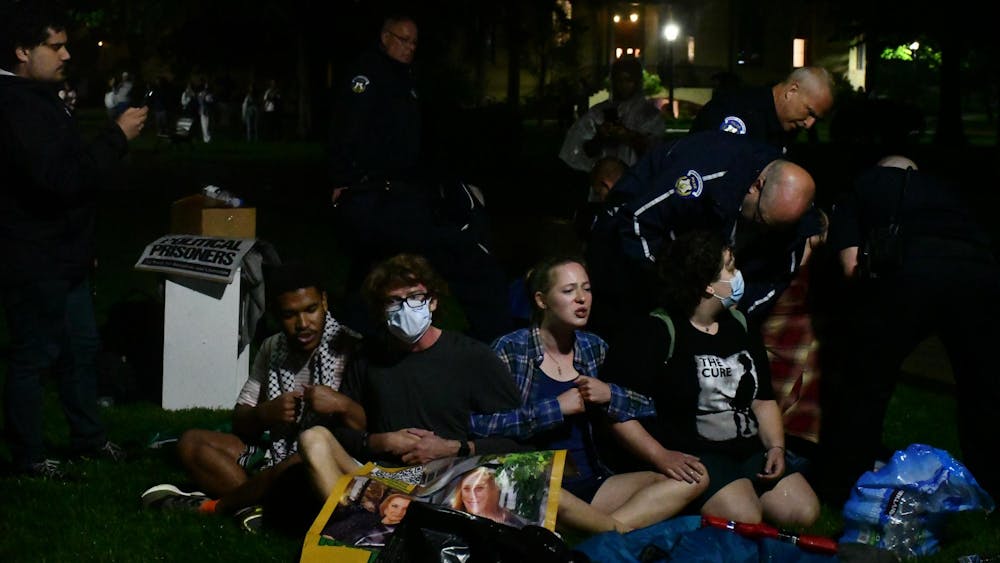Associate professor of nursing science Annette Peacock-Johnson asked her students to give a new learning approach their best shot, while chair of the social work program Frances Kominkiewicz collaborated with librarian Sue Wiegand to check out new research techniques.
All three faculty members presented their findings at a colloquium on Friday at Saint Mary’s.
Peacock-Johnson said she employed a flipped-classroom approach when teaching her students about diabetes mellitus to determine how she could most effectively use class time.
“Obviously, the traditional method is where the teacher instructs, the students take notes, the students follow guided instruction and the teacher gives an assessment, such as an assignment or some sort of an exam,” she said. “In the flipped classroom, the students do some sort of learning activities outside of or before class in preparation that could include video podcasts or exploration websites. In class, it’s all about problem-solving activities that can be done in small groups.”
Peacock-Johnson said she administered quizzes before and after class to ensure her students were actively listening to the out-of-class lectures and benefitting from discussions with their peers.
“It does no good to assign them to look at podcasts … and they don’t prepare,” she said. “I then followed it up at the end of class to see if there was a difference in terms of their learning after we did the in-class discussion and group problem-solving.”
She said the flipped-classroom approach enabled her to connect more with her students and provide them with individual attention.
“I loved the interaction,” she said. “It was wonderful being able to circulate and to go individually into the groups and see what their thinking was and what they were coming up with.”
According to Peacock-Johnson, one major limitation of the flipped classroom method was that some students felt as though they no longer needed to complete the assigned reading before class.
“They would watch the videocast, but they wouldn’t do the readings,” she said. “That wouldn’t help them glean some of the content from their text, which is still important.”
Collaborating with others posed a challenge for some of her students, according to Peacock-Johnson.
“Students working in groups was great when everyone participated,” she said. “It was hard to get a lot out of the class when people didn’t participate, so that was a difficult issue. One of the things I’ve discussed with faculty in my department is what to do about small groups because I let them self-select, and when they self-select, they go with their buddies, who may or may not be good interactive teachers.”
Peacock-Johnson said implementing the flipped classroom approach can be difficult at first, but seeing students take ownership of their learning makes the challenge worth it.
“It’s very time-intensive initially,” she said. “It takes a whole lot of time to put together the recordings, to select the case studies, to develop the quizzes. The upside is once you have that created, then you just have to tweak it.”
Peacock-Johnson said she was pleased to find that many students adapted well to the flipped classroom approach.
“The evidence from this study suggests that the flipped classroom can be a very effective teaching methodology,” she said.
Wiegand said she and Kominkiewicz began their project — researching the effects of integrating student learning through library and classroom instruction — in 2002.
“We have progressed through the years in various ways,” Wiegand said. “We have collaborations with Notre Dame librarians now. We want to encourage collaboration with faculty.”
According to Wiegand, librarians and professors who work together can provide students with the most comprehensive understanding of the material, particularly in social work classes when librarians’ expertise about research comes in handy.
“Our research is to investigate students seeking information and to improve how students can find research in the library,” Wiegand said.
According to Kominkiewicz, librarians are an invaluable asset to professors, as they bring new insights and fresh perspectives to the traditional classroom setting.
“The issue that we have is that we’re seeing some of our resources dwindle in some areas, and so we’ve had to go outside and collaborate with each other basically,” she said. “So much of what I end up doing has so much to do with assessment, evaluation and learning outcomes. Without Sue’s help … we would have never been able to get this far.”
Kominkiewicz said Wiegand’s assistance has solidified her students’ understanding of the social work field while supplying them with a fortified understanding of how to conduct useful research.
“We have to prove that there are competencies that have been achieved, not just knowledge or values or skills,” Kominkiewicz said. “We have to make sure that students are going to be able to be ethical in their work.”
According to Kominkiewicz, Wiegand provides her students with a comprehensive overview of effective research practices that will prepare them for the social work field.
“I can’t go out and start working in a clinical setting, and neither can the students until they have done that research review and know what some of the studies are and how to work with particular individual social issues,” Kominkiewicz said.
Wiegand said she helps students research topics such as social policy by assisting them in tracing the development and implications of various laws. She said she encourages students to think critically about the factors that surround the composition of a bill.
“Look for the funding,” Wiegand said. “Even if you’re just doing a strategic plan, there has to be some funding appropriated for that.”
Kominkiewicz said her students’ satisfaction with Wiegand’s involvement in her classes is evident.
“The students have really appreciated being able to go to our library and know that that’s where we sit down with our library faculty and talk about what they’re missing, what they have to do and where they have to go to find things,” Kominkiewicz said. “A lot of it is free online, so they just need to know how to do that.”













